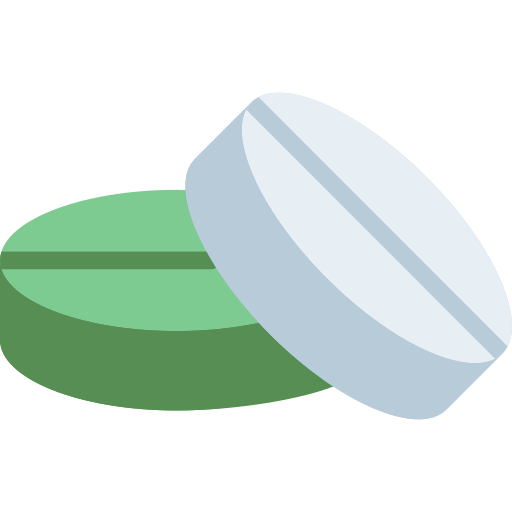
Olmesartan Medoxomil + Hydrochlorothiazide
20 mg+12.5 mg
UniMed UniHealth
Product Details
Description
Angiotensin-II formed from angiotensin-I in a reaction catalyzed by angiotensin-converting enzyme (ACE), is a potent vasoconstrictor, the primary vasoactive hormone of the renin-angiotensin system and an important component in the pathophysiology of hypertension. It also stimulates aldosterone secretion by the adrenal cortex. Olmesartan blocks the vasoconstrictor and aldosterone-secreting effects of angiotensin-II by selectively blocking the binding of angiotensin-II to the AT 1 receptor found in many tissues (e.g. vascular smooth muscle, adrenal gland). In-vitro-binding studies indicate that Olmesartan is a reversible & competitive inhibitor of AT 1 receptor. Olmesartan does not inhibit ACE (kinase-I, the enzyme that converts angiotensin-I to angiotensin-II and degrades bradykinin). Hydrochlorothiazide is a thiazide diuretic. Thiazides affect the renal tubular mechanisms of electrolyte reabsorption, directly increasing the excretion of Sodium and Chloride in approximately equivalent amounts. Indirectly, the diuretic action of Hydrochlorothiazide reduces plasma volume with consequent increases in plasma renin activity, increases Aldosterone secretion & urinary Potassium loss and decreases serum Potassium. The renin-aldosterone link is mediated by angiotensin-II. So, co-administration of an angiotensin-II receptor antagonist tends to reverse the potassium loss associated with these diuretics.
Olmesartan: No significant drug interactions were reported in studies in which Olmesartan Medoxomil was co-administered with hydrochlorothiazide, digoxin or warfarin in healthy volunteers. Olmesartan Medoxomil is not metabolized by the cytochrome P450 system and has no effects on P450 enzymes; thus, interactions with drugs that inhibit, induce or are metabolized by those enzymes are not expected. Hydrochlorothiazide: When administered concurrently, the following drugs may interact with Thiazide diuretics: Alcohol, Barbiturates or Narcotics: Potentiation of orthostatic hypotension may occur. Antidiabetic drugs (oral agents and Insulin): Dosage adjustment of the antidiabetic drug may be required. Other antihypertensive drugs: Additive effect. Corticosteroids, ACTH. Lithium.
The combination of Olmesartan and Hydrochlorothiazide is contraindicated in patients who are hypersensitive to any component of this product. Because of the Hydrochlorothiazide component, this product is contraindicated in patients with anuria or hypersensitivity to other sulfonamide-derived drugs.
The common side-effects are nausea, headache, dizziness, hyperuricemia, upper respiratory tract infection and urinary tract infection. Other adverse effects are chest pain, back pain, peripheral edema, abdominal pain, dyspepsia, gastroenteritis, diarrhea.
Safety and effectiveness in nursing mother & pregnancy have not been established. The drug should be discontinued during these conditions.
Periodic determination of serum electrolytes should be performed at appropriate intervals to detect possible electrolyte imbalance like hypokalemia, hyponatremia and hypochloremic alkalosis. Hyperuricemia may occur in certain patients receiving thiazide therapy. Impaired renal function.
Renal Impairment Patients: The usual regimens of therapy with this may be followed provided the patient's creatinine clearance is >30 ml/min. In patients with more severe renal impairment, loop diuretics are preferred to thiazides. So, this preparation is not recommended. Hepatic Impairment Patients: No dosage adjustment is necessary with hepatic impairment. Paediatric use: Safety and effectiveness in paediatric patients have not been established. Geriatric use: Clinical studies of Olmesartan and Hydrochlorothiazide combination did not include sufficient numbers of subjects aged 65 and over to determine whether they respond differently from younger subjects. In general, dose selection for an elderly patient should be cautious.
Olmesartan: Limited data are available in regard to overdosage in humans. The most likely manifestation of overdosage would be hypotension and tachycardia. Supportive treatment should be instituted. Hydrochlorothiazide: The most common signs and symptoms observed are those caused by electrolyte depletion (hypokalemia, hypochloremia, and dehydration) resulting from excessive diuresis. If digitalis has also been administered, hypokalemia may accentuate cardiac arrhythmias.
-
Support 24/7
Call us anytime -
100% Safety
Only secure payments